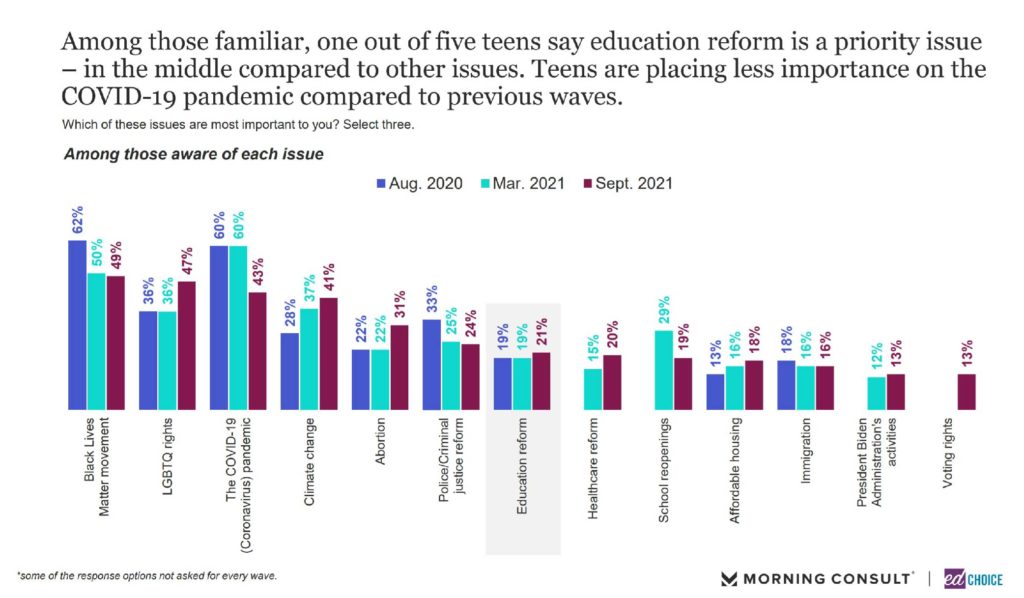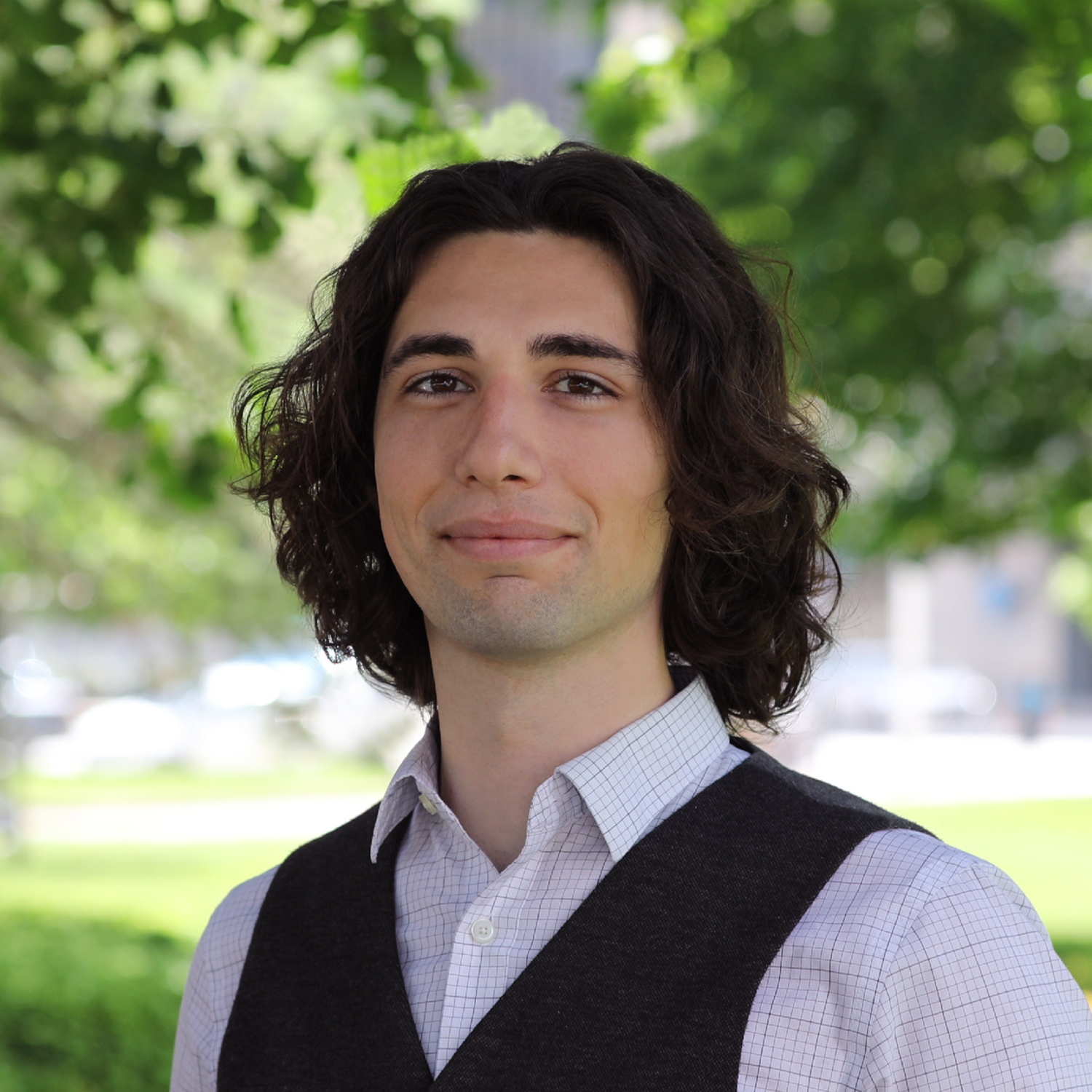Public Opinion Tracker Deep Dive: Teen Perspective (August – September)
The high school classes of 2022 and 2023 will remember their teenage years much differently from their older peers. These students have had three high school years affected by the COVID-19 pandemic in some way. With vaccines now available to them, teens can be more protected against infection than they were in previous years, but the rise of the Delta variant has complicated many schools’ decisions about how to operate in academic year 2021-22.
With that backdrop, we conducted a nationally representative survey of children aged 13-18 (n =1,000, fielded Aug. 31 through Sept. 10) to get a pulse for their perspectives on the pandemic, school, and everything in between. This survey of teens is our third wave. We conducted two previous surveys of this population in March 2021 and August 2020.
In a nutshell: Concerns about the pandemic have decreased since last spring, even more so when compared to a year ago. Most teens have received or plan to receive a COVID-19 vaccine, and even more of them support some sort of vaccine and masking policies in public schools. Most teens continue to say their mental health has declined since the pandemic began, though the numbers appear to be affected by school type and demographics. Teens are most likely to say they learn best with hands-on learning and in-person, and they most value learning job skills at school. Most teens want to make decisions about their school type along with their parents. Education reform is the least-known political issue we asked about.
Here is a more detailed look at some key findings:
Concern about COVID-19 has declined since March, but a strong majority of teens still feel concerned. Support for vaccine policies appears high.
Two-thirds of teens feel at least somewhat concerned about the COVID-19 pandemic, down from 72 percent in March. Most of this change can be attributed to a reduction of teens feeling “very concerned” about the pandemic.
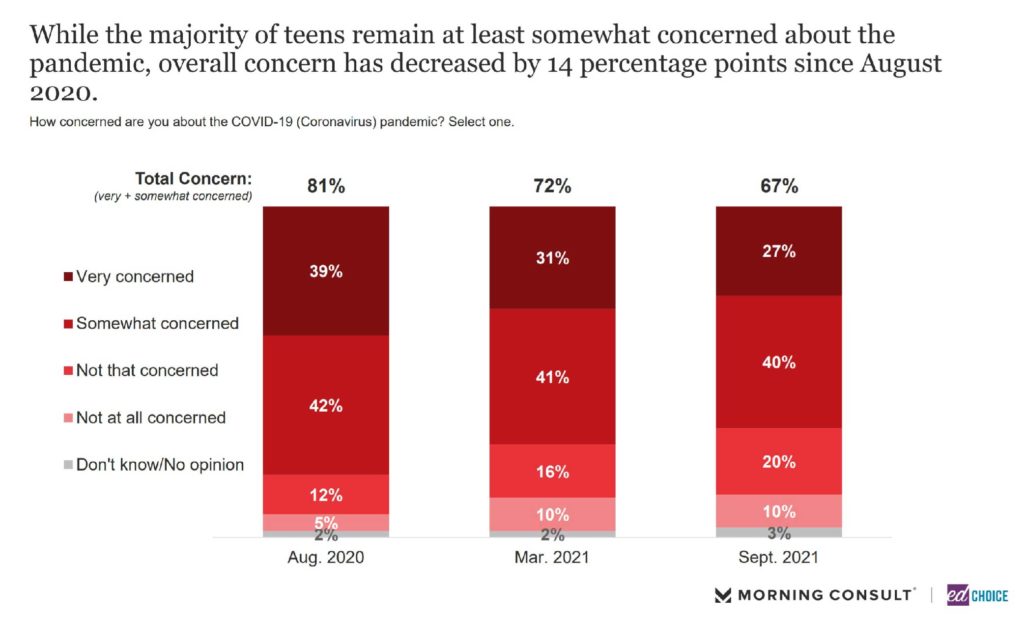
Just over half of teens say they have been vaccinated against COVID-19, and another 18 percent say they plan to receive the vaccine at some point. About a quarter of teens say they have not and do not expect to receive the vaccine.
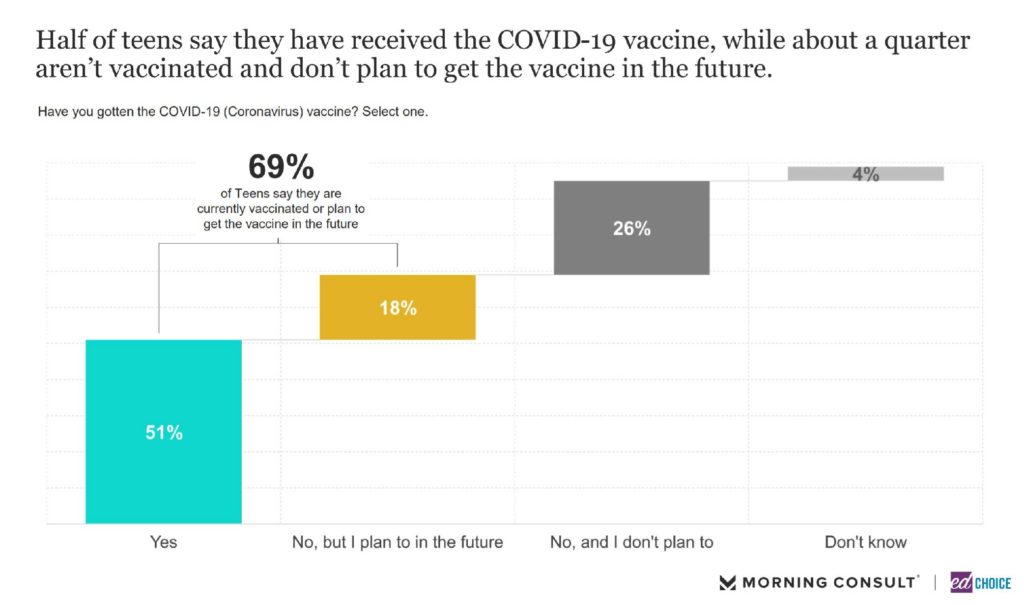
Notably, the share of teens who have received or plan to get vaccinated (69%) is smaller than the share of teens who think the COVID-19 vaccine should be encouraged or required for public school students aged 12 and over attending school in person (83%). Teens are more likely than adults to say public school staff and students aged 12 and over should be required to receive the vaccine than adults. Teens also are more likely to say public school students aged 5-11 should be encouraged to receive the vaccine when available, but they are less likely to say it should be mandatory.
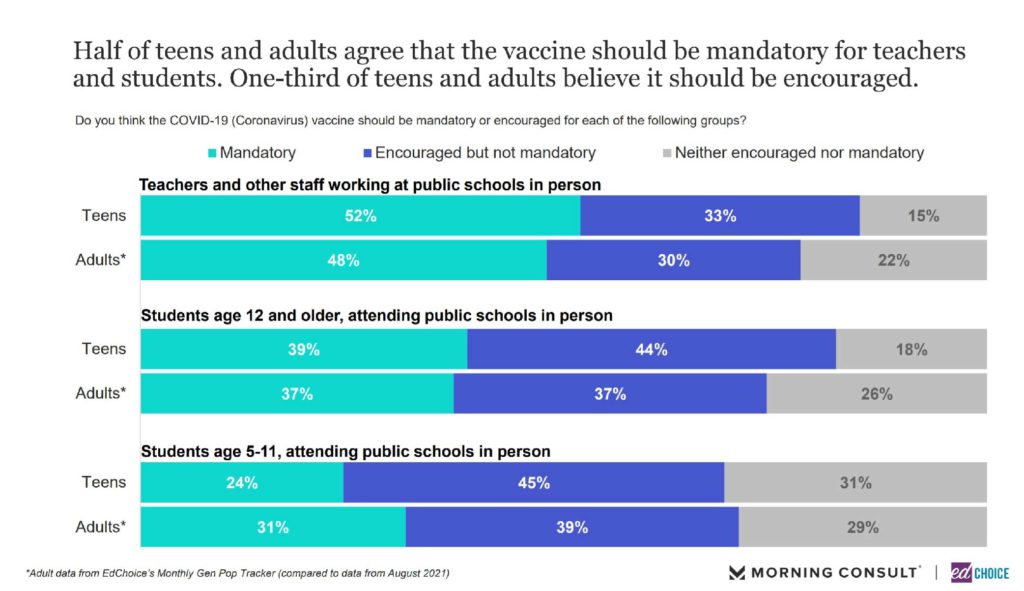
Teens were more likely to say they always wore masks in public spaces than anyone else, followed by teachers and school staff. Less than half said their friends usually wore masks in public spaces. For all groups we asked about, teens were likely to say they saw people wearing masks in public more often than not.
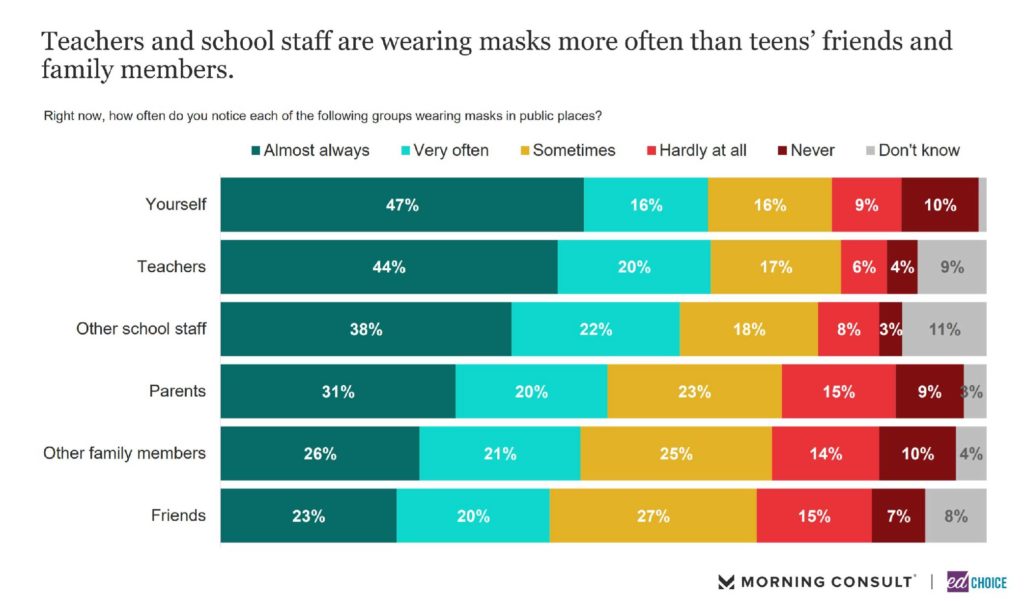
Self-reported levels of happiness and mental health have declined since the pandemic began, but the numbers are not as dire as they were in March.
Teens are more likely to say various happiness and mental health indicators declined over the course of the pandemic than improved. The single exception is familial relationships. That said, self-report indicators are less negative than they were back in March. Teens are most likely to feel more stressed since the pandemic began, though the gap between “worse” and “better” responses declined 12 percentage points over the last six months. Anxiety was a close second, and relative to other categories, it did not improve much since March. We observed the largest gains (+14 points) for happiness and motivation.
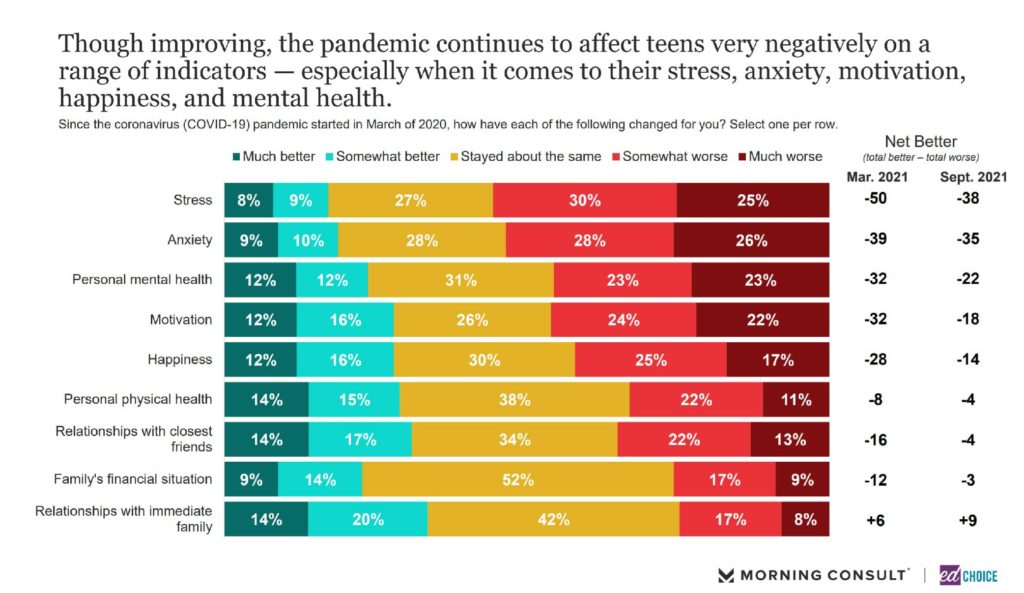
A few factors appear to be associated with more negative responses. Teens attending school completely online have a greater gap between “worse” and “better” responses. While male students have nearly even average responses (with a “net better” score of -2 points), the gap between female students’ “worse” and “better” responses is 27 percentage points. White students are much more likely to report worse happiness and mental health indicators than Black or Hispanic students—in fact, Black students are more likely to report their happiness and mental health have improved rather than worsened.
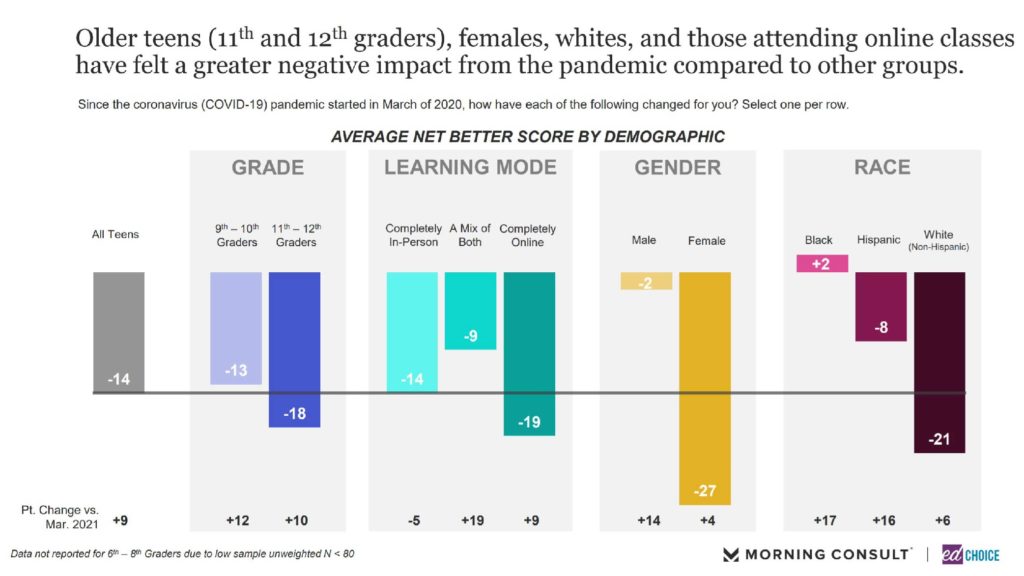
Most teens’ schools have completely in-person learning and with some sort of mask policy. Teens appear welcoming of school masking policies but think their schools are falling short executing some COVID-19 safety activities.
Two-thirds of teens say their school has a completely in-person approach right now, a 50-point jump from March. Eleven percent say their school is completely online, down from 45 percent, while 14 percent are using a hybrid approach of both in-person and online.
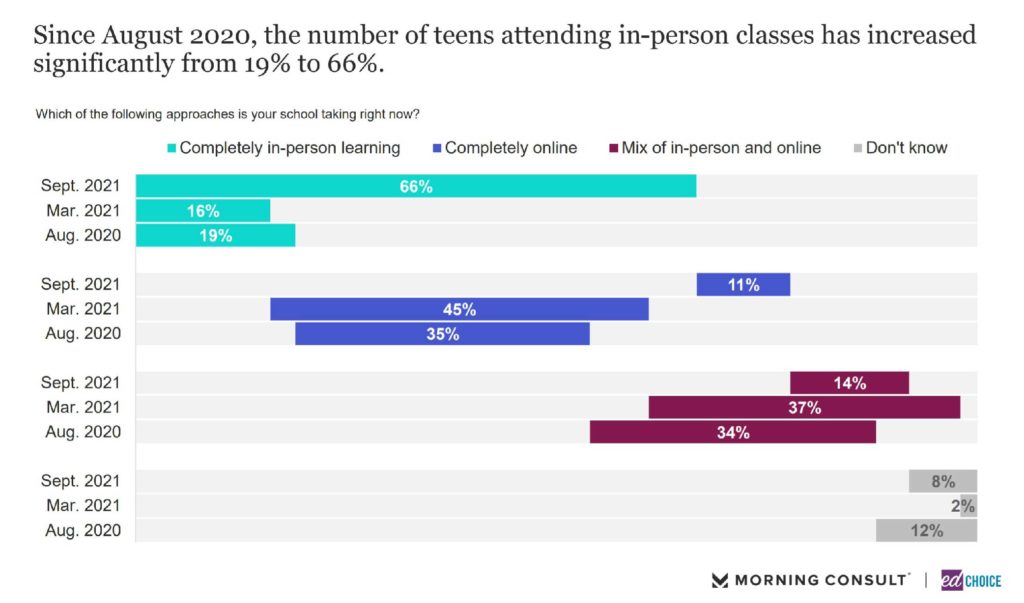
Half of teens say their school is requiring masks, while another 20 percent say they are encouraged. One percent of students say masks are prohibited, and 10 percent of students don’t know their school’s mask policy.
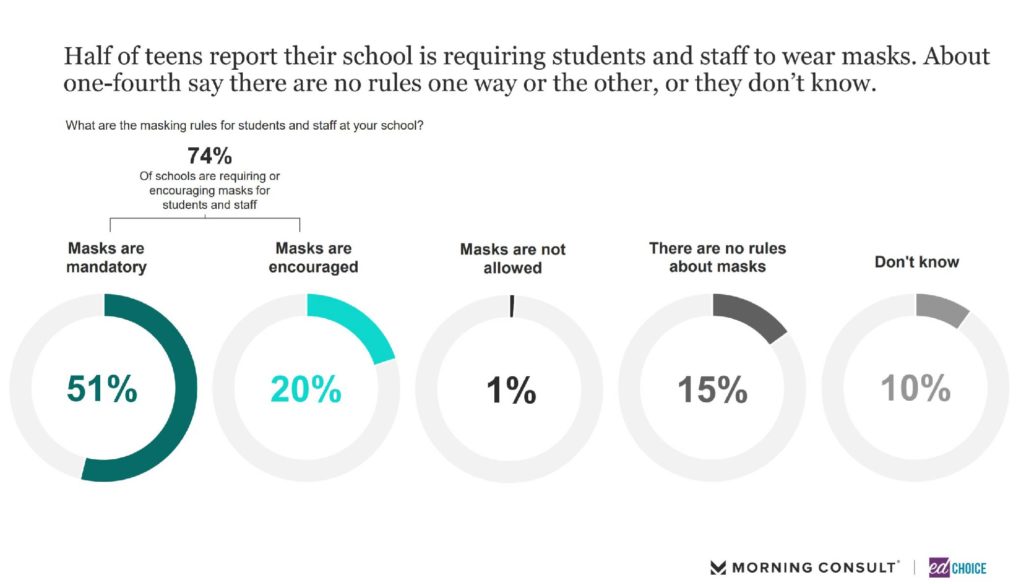
Most teens support masking policies at their school, and 40 percent of them indicate “strong” support. The share of teens who oppose masking at their school is level with those aren’t sure or have no opinion about masking.
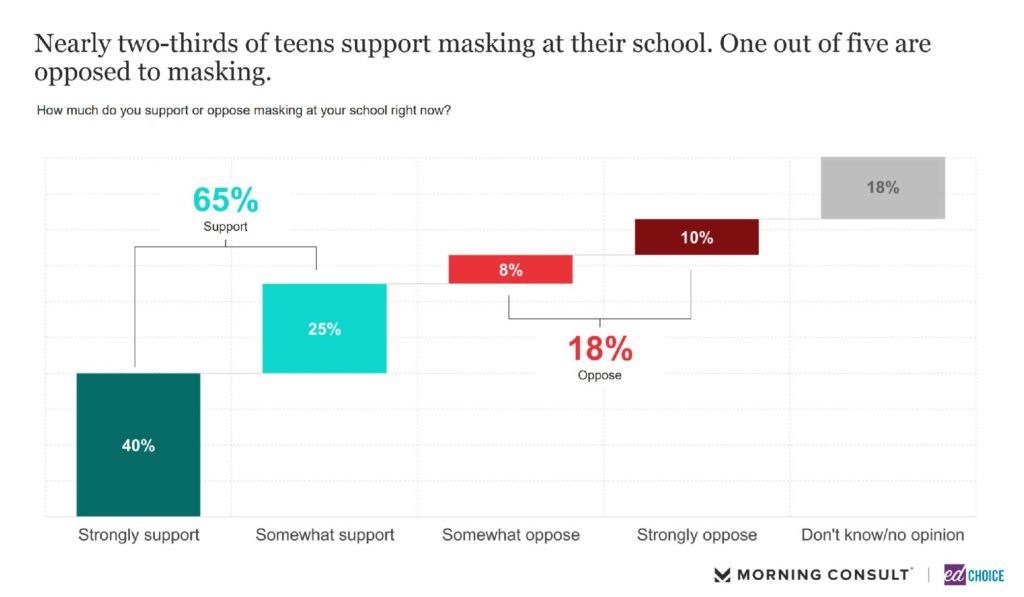
In fact, teens are more likely to say masks should be required in K-12 schools than any other location, at 55 percent. In comparison, 50 percent of adults think masks should be required for teachers and 47 percent think they should be required for students 12 and over. Teen support for mask requirements drops noticeably for recreational activities, especially when those activities are outside. 
Teens generally rate their schools’ cleaning and social distancing policies worse than they did in March, with fewer students considering their schools’ activities “excellent” or “above average.” Cleaning was the best-rated activity and the only to have positive ratings exceed negative opinions. Limiting students per classroom saw the largest drop in approval—total above average responses was over a third in March and less than a quarter in September.
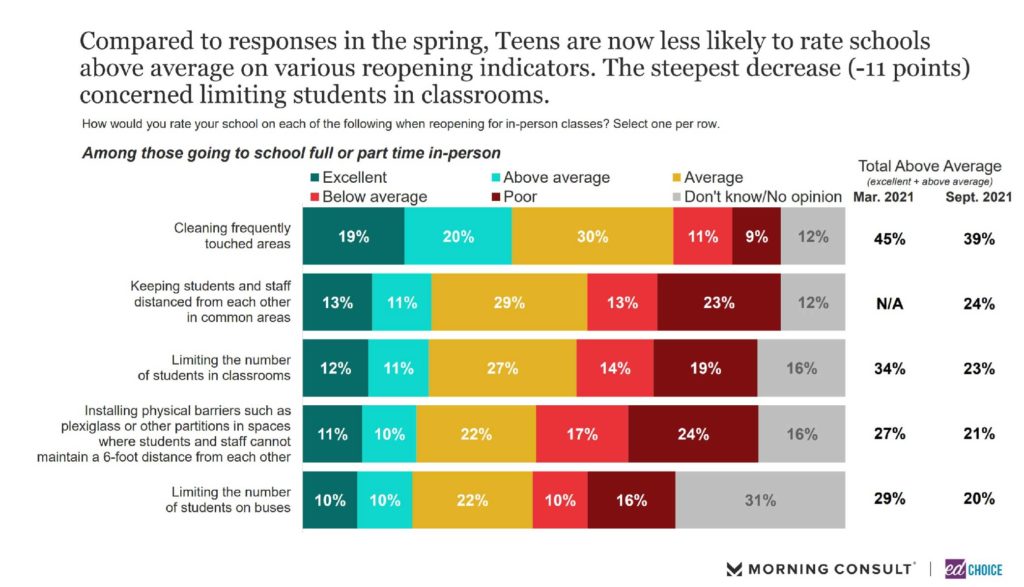
Teens indicate a preference for interactive learning, and most value job-based education.
Back in March, teens who were fully back to school said they learned best with hands-on activities. That preference remained true in September, with another 10 percent of teens currently attending school in-person naming hands-on activities their favorite mode of learning. Preference for hands-on learning also saw a 10-point jump among online students, though they still indicate they learn best from homework assignments.
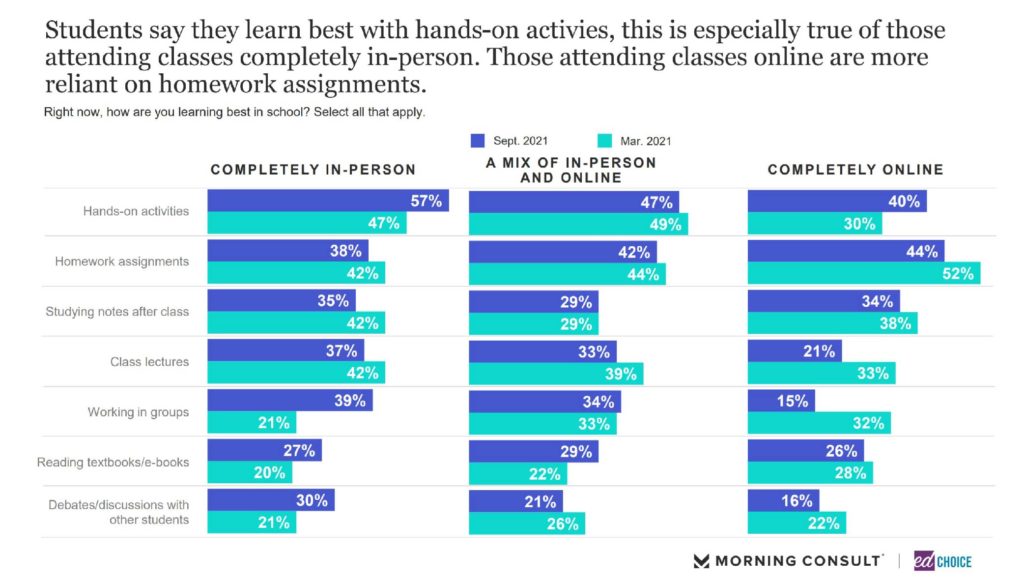
Since March, teens have become more likely to include more time at school in their ideal school week. Less than half most preferred all five days to be spent at school, however, at 45 percent. Hybrid schooling was nearly as popular, with 43 percent of teens indicating their ideal school week would involve one to four days spent at home. The greatest shifts in preferences lie in the extremes—the share of teens most preferring all five days at school increased 11 percentage points since March, while the share preferring all five days at home declined 10 points.
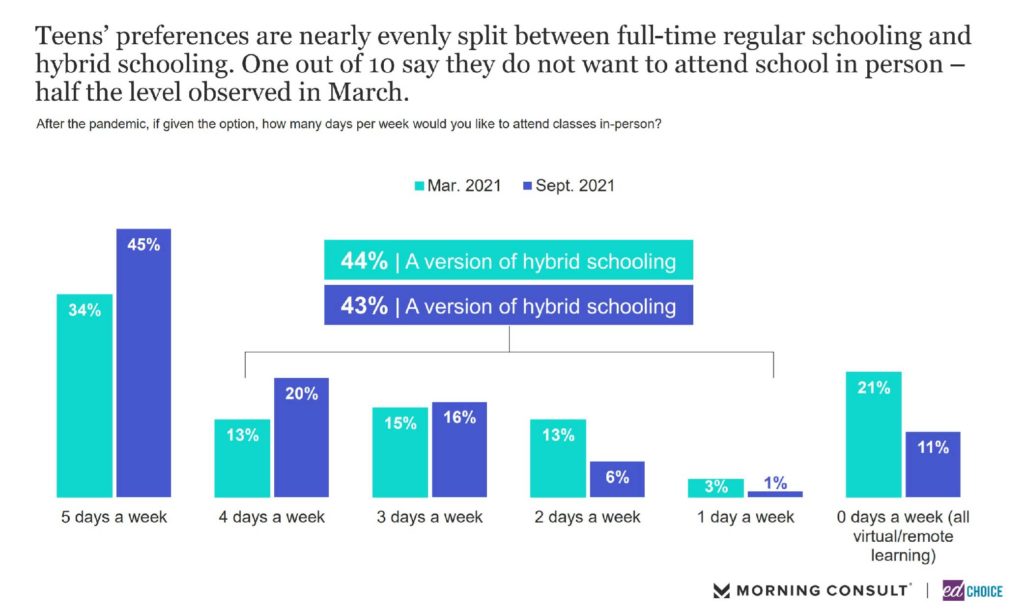
Over half of teens think it “extremely important” for them to learn job skills and critical thinking at school. About a third of teens think the same about core academic subjects, which they appear to hold with less significance than other aspects we suggested. In comparison, 53 percent of adults thought academic subjects were “extremely important” for high schoolers to learn, about a 20-point gap between teens and adults. On the other hand, teens were more likely than adults to think it extremely important to learn solutions to social problems, at 39 percent and 25 percent, respectively.
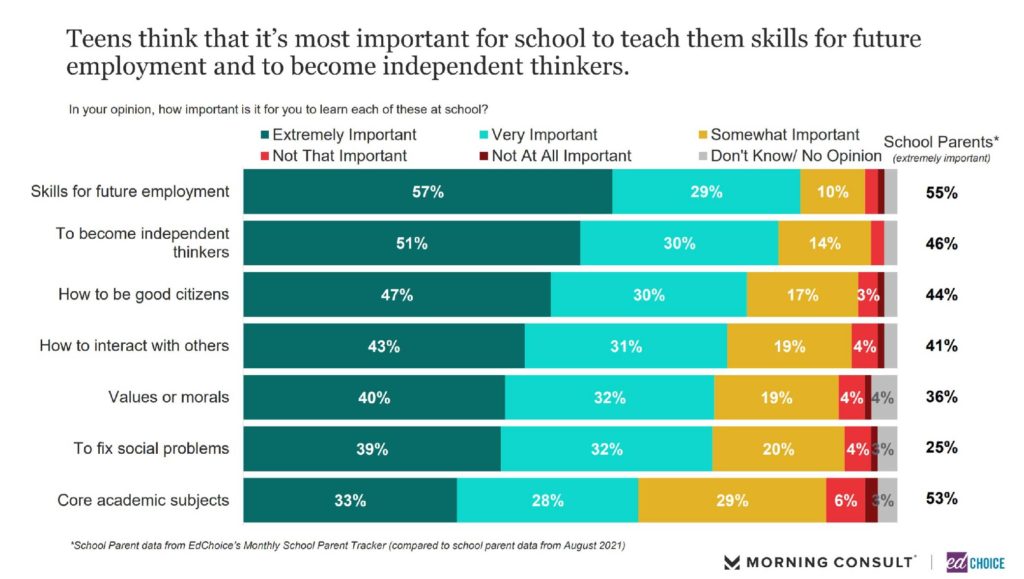
The vast majority of teens want to have some decision making power regarding choosing what type of school they attend.
About two-thirds of teens said they have at least some control over choosing their school type, and the remaining third said their parents had sole power over that decision. Just eight percent of students indicated they wanted their parents to be the only decision makers regarding school type, and about 91 percent wanted at least some responsibility in that area. More particularly, 72 percent of teens wanted to share school type decision making with their family.
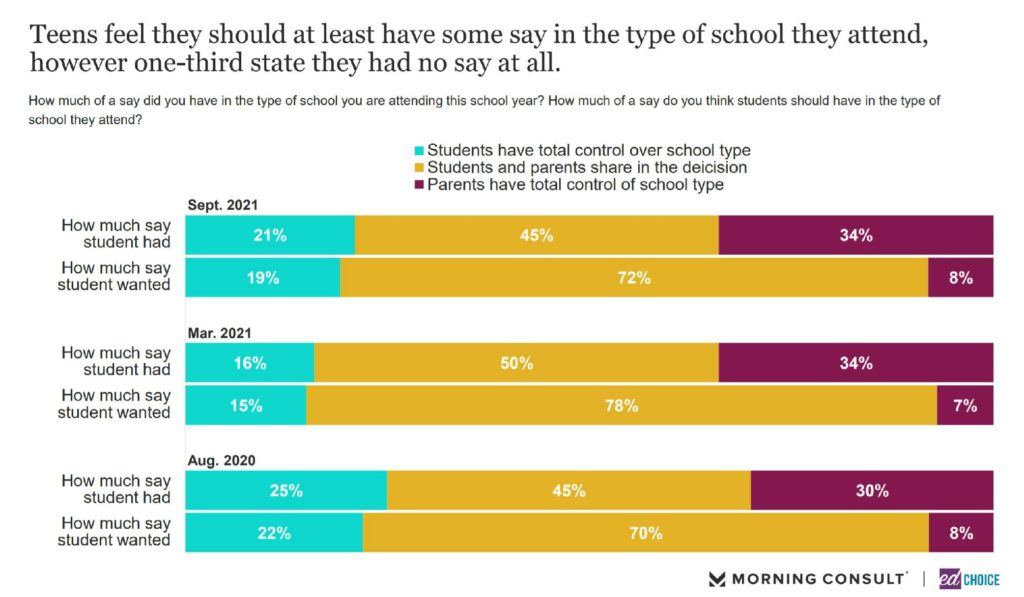
Awareness of various issues and public affairs has declined since March.
In general, teens were less likely to say they have read, seen, or heard something about a variety of policy reform topics in September than they were in our two previous teen surveys. Awareness of the pandemic, , school re-openings, and education reform all show significant declines since March. Education reform was the least-known issue of the list we presented.
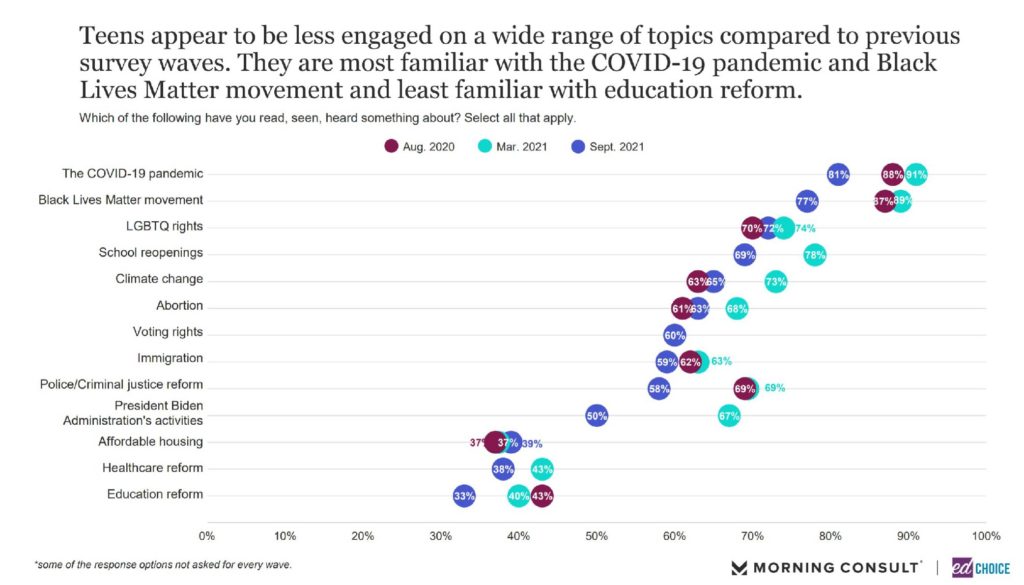
Among teens who were aware of education reform matters, 21 percent named it as one of their three most important issues.
